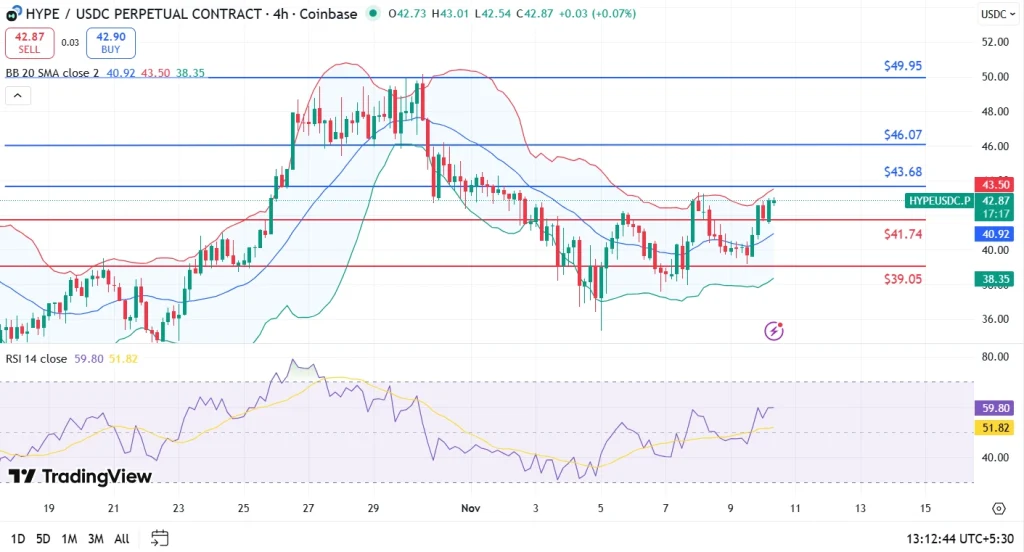After xUSD, it seems that the USDX pool has also dried up.
The shortcomings of "USDe-style stablecoins" are beginning to surface.
The flaws of "USDe-style stablecoins" are beginning to surface.
Written by: Eric, Foresight News
The reason behind the collapse of xUSD issuer Stream Finance was finally revealed yesterday. The Delta-neutral strategy suffered losses in collateral assets due to ADL during extreme market conditions. The risks accumulated by entrusting funds to third parties for off-chain operations and using leveraged loop strategies erupted collectively after the third party incurred losses close to $100 million, ultimately resulting in insolvency.
In an article I translated in 2023, Columbia Business School professor Austin Campbell argued that USDe issued by Ethena is not a stablecoin, but rather a share of Ethena's structured financial product.
The depegging of xUSD itself has also affected many DeFi strategies based on this "stablecoin" as well as some lending positions collateralized by xUSD. Strategies that maintain the value of collateral through Delta-neutral approaches, or even slowly appreciate, have been hit under extreme market conditions and operational opacity.
More worryingly, we have found that the xUSD incident may not be the end of this story.
All USDX that could be borrowed has been borrowed
A user named 0xLoki on X tweeted last night that, originally, one only needed to wait a day to redeem the stablecoin used to mint sUSDX. However, an address ignored the annualized interest rate of over 30% and drained all pools on Euler where USDX and sUSDX could be used as collateral to borrow other stablecoins.
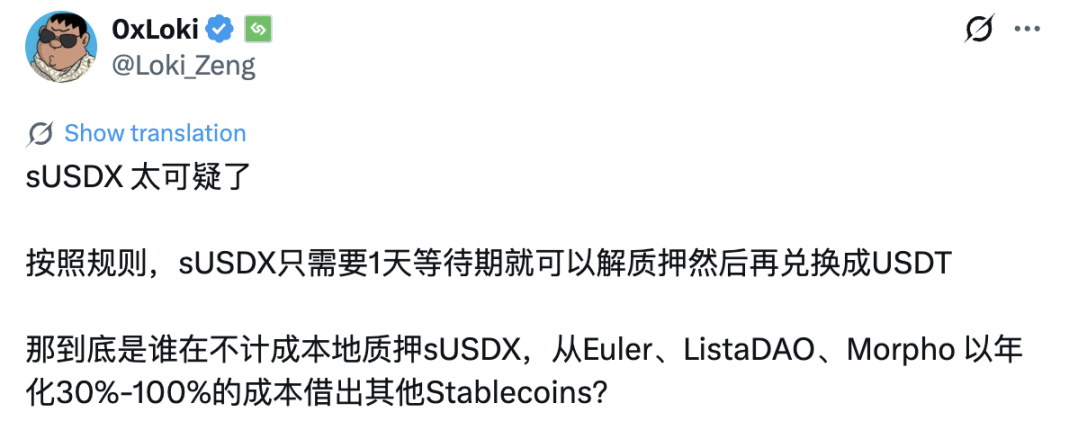
For those unfamiliar with USDX, here’s a brief introduction. USDX is a stablecoin issued by usdx.money, which announced at the end of last year that it had completed a $45 million financing round at a $275 million valuation. The issuance model of USDX is almost identical to Ethena, also using a Delta-neutral strategy, and users staking USDX can earn funding rate yields from short positions. Unlike Ethena, usdx.money not only operates with bitcoin and ethereum but also allows some altcoins to play a central role in its strategies. While this amplifies returns, it also increases risk.
According to my research, data from Euler last night showed that in the Re7 Labs Cluster—the only platform supporting USDX and sUSDX as collateral for lending—assets such as USDT, YUSD, USD1, and even WBNB and BTCB had all been borrowed out.
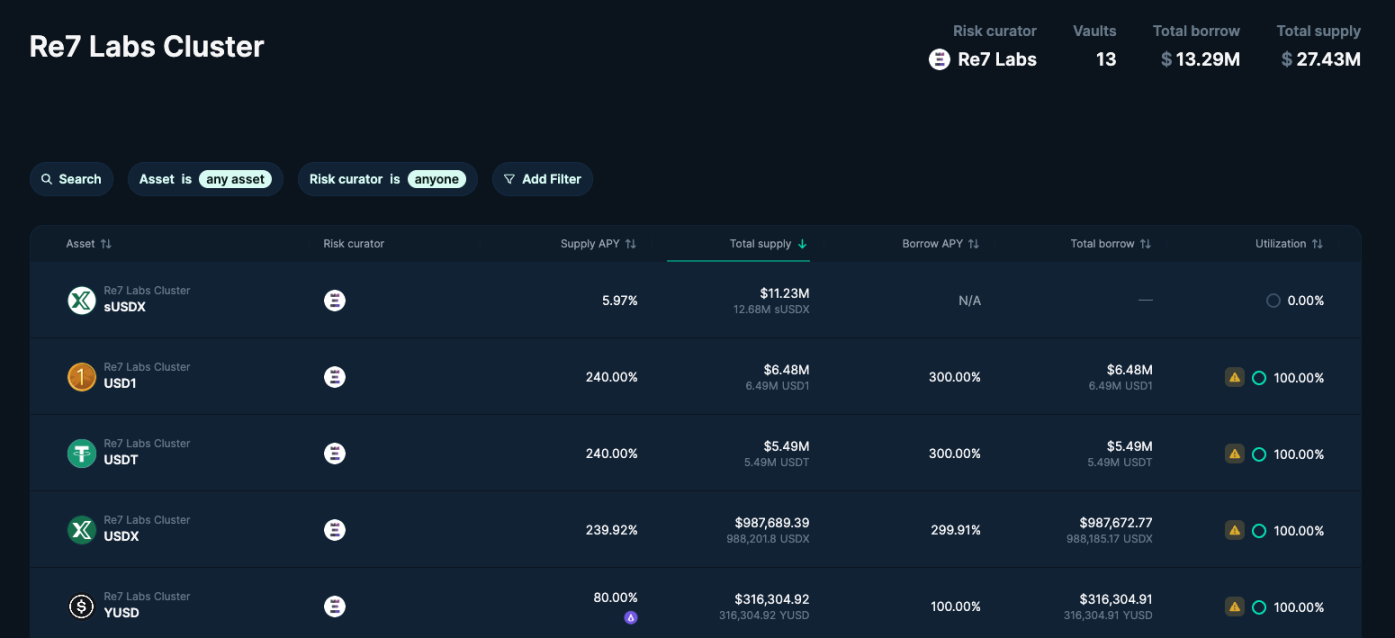
On Lista DAO, pools where USDX and sUSDX can be used to borrow USDT and USD1 have also been emptied. At the time of writing, the borrowing rate for sUSDX-collateralized USDT loans exceeded 800%. If borrowers still choose not to repay, the rate will continue to soar until forced liquidation occurs.

Additionally, 0xLoki mentioned in the tweet that there are also relevant lending pools on Morpho and Slio, but as of writing, I could no longer find related information—possibly because the platforms have removed the corresponding pools from their frontends. However, the fact remains that all assets in the DeFi market that could be borrowed using USDX and sUSDX as collateral have been almost completely wiped out. Similar to xUSD, the market for USDX-based assets was also established by Re7 Capital and MEV Capital. Some users on X revealed that Re7 Capital staff stated in the Euler Discord that they are discussing solutions with Stables Labs, but there is no clear conclusion yet.
Who is frantically "borrowing money"?
A user named Arabe ₿luechip on X noticed something was wrong early yesterday morning and listed four addresses that had drained available funds from various markets.
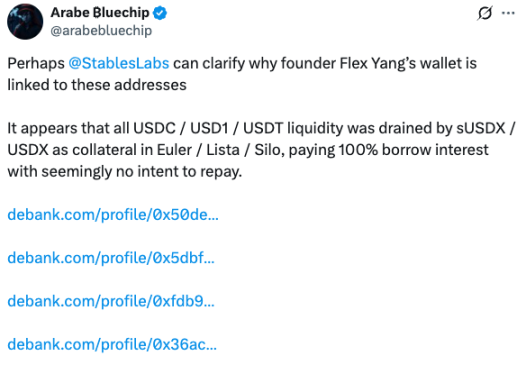
Among them, the address starting with 0x50de began receiving USDT from the address starting with 0x246a in late July this year and transferred it to Binance. Since late October, it started receiving large amounts of USDX from the address starting with 0x5dbf, as well as significant amounts of sUSDX from other sources. It then borrowed USDT, USDC, USD1, and other stablecoins from Euler, Lista DAO, and Silo, almost always transferring them to Binance immediately after borrowing.
After exhausting all borrowing options, this address directly swapped USDX for USDT on PancakeSwap and transferred it to the exchange. This process only ended 11 hours ago.
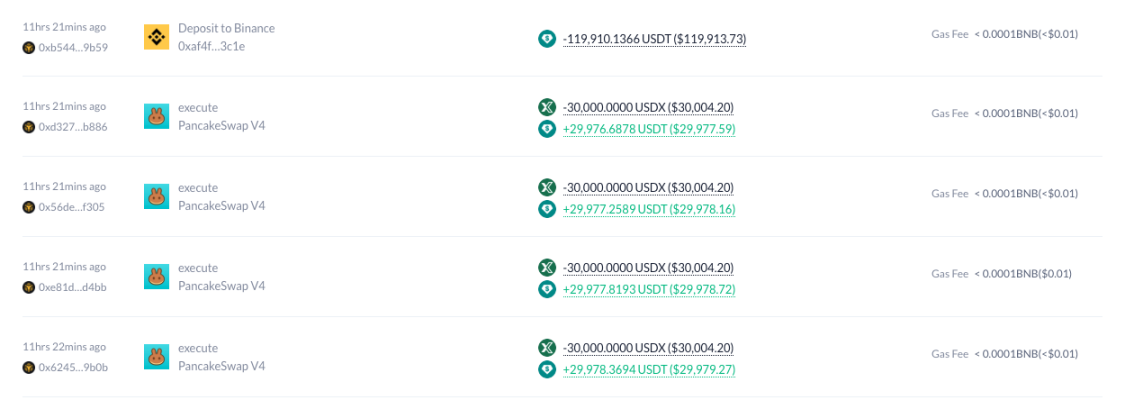
The address starting with 0x5bdf also conducted large-scale USDX-collateralized borrowing of USDT and USD1 on Euler and Lista DAO, but currently holds none of the borrowed stablecoins.

As for the remaining two addresses, according to my research, although they hold large amounts of USDX or sUSDX and have engaged in collateralized borrowing in the past, they ceased activity in September and June, respectively, and are not closely related to this incident.
The most suspicious address, starting with 0x50de, has been tagged by Arkham as likely belonging to Flex Yang, former founder of Babel Finance and HOPE. The most direct evidence is that the address starting with 0x246a, directly labeled as Flex Yang, transferred USDT to the 0x50de address twice four months ago, which coincided with the start of the continuous borrowing of stablecoins and transfers to exchanges.

Additionally, according to LinkedIn information, Flex Yang is the founder of Stables Labs, the company behind usdx.money.
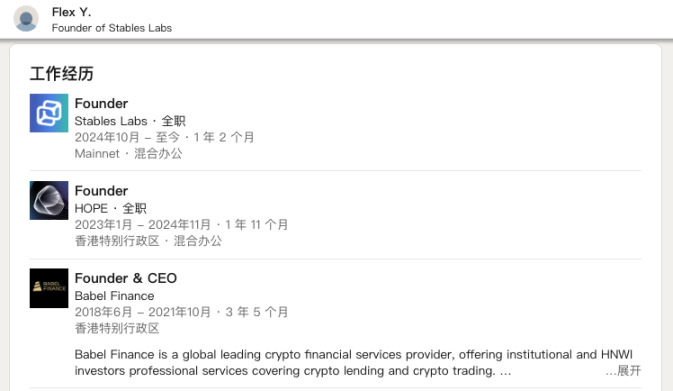
An address directly linked to the founder is borrowing stablecoins regardless of interest rates, and is also frequently swapping USDX for USDT on PancakeSwap and transferring the obtained stablecoins directly to exchanges. These abnormal operations have raised alarm among many users. Some users on X believe that USDX may also have suffered from insufficient collateral during the "10.11 crash" due to ADL or other reasons.
Although the multisig address of the Stables Labs project removed nearly $20 million in liquidity from PancakeSwap's stablecoin pool two days ago and then added a total of $10 million in liquidity, as of writing, the pool has shown a clear liquidity imbalance, possibly related to the multiple trades made by the 0x50de address on PancakeSwap starting at 13:44 yesterday afternoon.
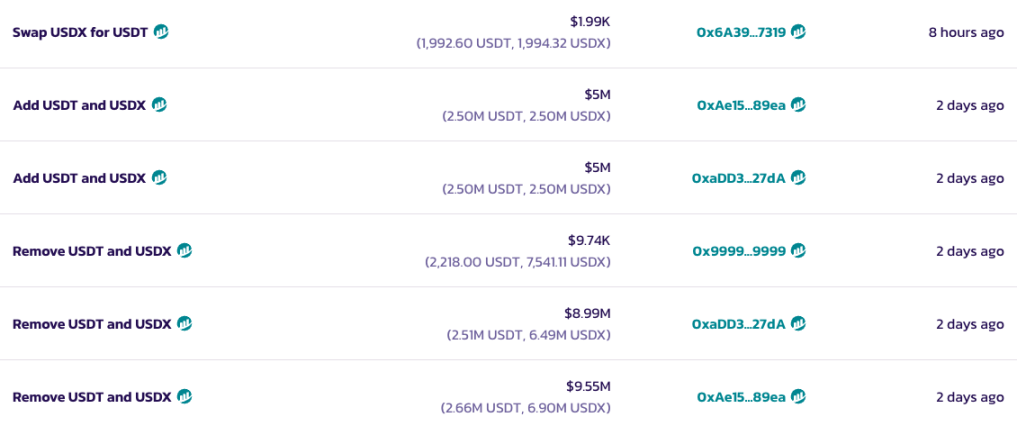
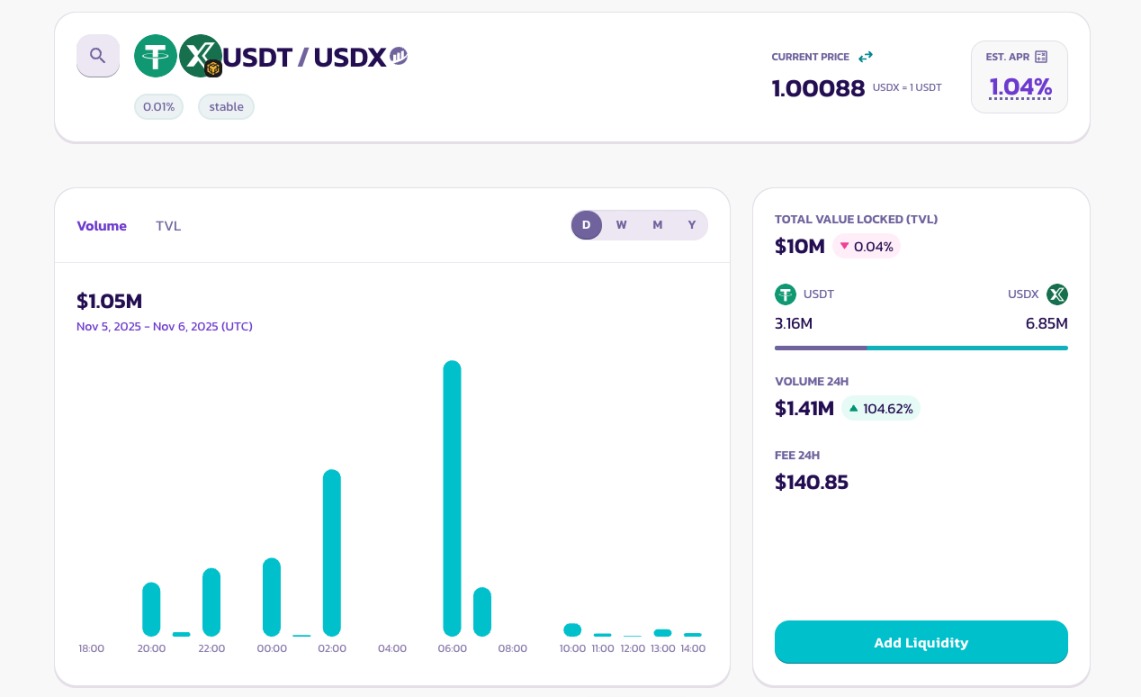
Decentralized stablecoins urgently need transparency
According to usdx.money's official website, as of 9 a.m. today, it still holds over $680 million in reserve assets on exchanges, with the vast majority on Binance.

However, given the lack of transparency of centralized exchanges, users have begun to question the authenticity of this asset report due to recent operations. We still do not have enough evidence to prove exactly what happened, but it is clear that some issues have arisen, prompting an address directly linked to the founder to do everything possible to escape. Meanwhile, there is still no news about USD0x, the USDX variant planned by Stables Labs to be backed by US Treasuries.
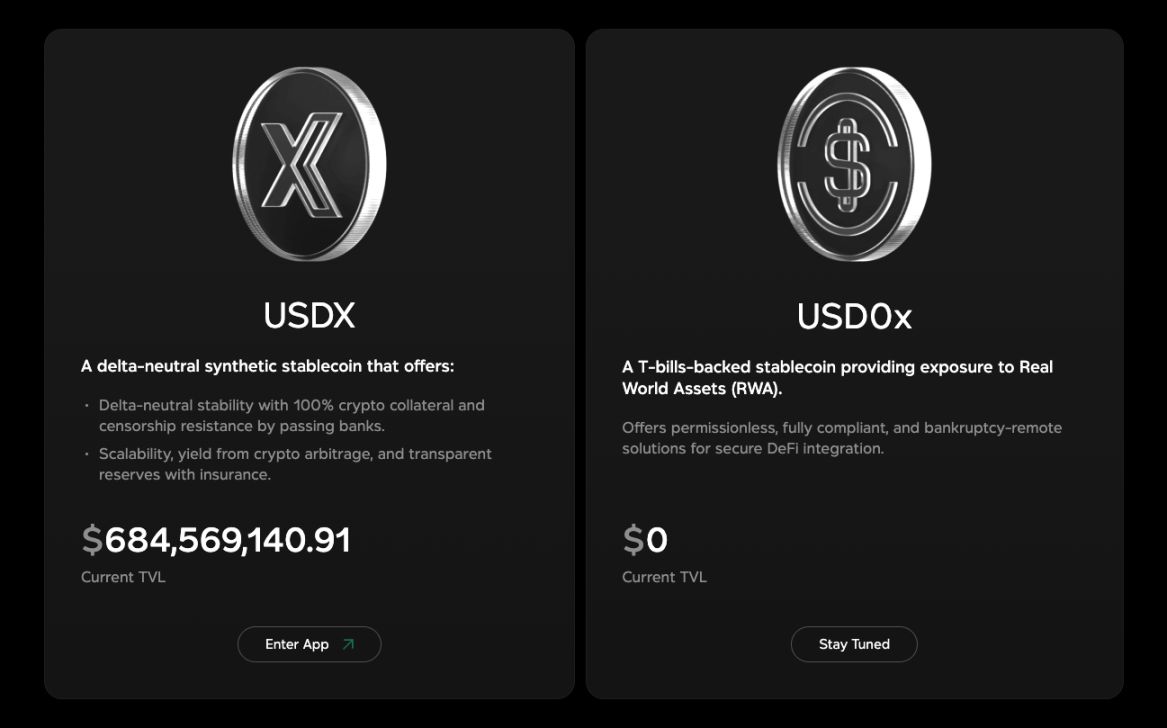
Stablecoins marketed as Delta-neutral have become highly sought after since Ethena, but because they require sufficient contract liquidity support, many project teams still choose centralized exchanges. This makes the collateral assets behind so-called "stablecoins" a black box—no one but the project team knows the real situation. Unless regular third-party audits can be implemented, if a large-scale project encounters problems, it could trigger a butterfly effect in the DeFi sector.
In addition to transparency, the current nesting of DeFi protocols is also quite complex. The complexity of many structured products has reached a level where it may be impossible to untangle. For example, crvUSD can use a stablecoin issued with crvUSD as the underlying asset to issue more crvUSD. Although this nesting may essentially just be a leverage issue, similar situations continue to expose risk management problems in DeFi.
The bear market of 2022 caused many highly leveraged centralized lending institutions to go bankrupt, but at least with their books, we could figure out exactly how much was owed. Now, DeFi faces a serious problem: even though all information is publicly available on-chain, we still can't figure out how many layers of leverage have been added to the most basic underlying asset.
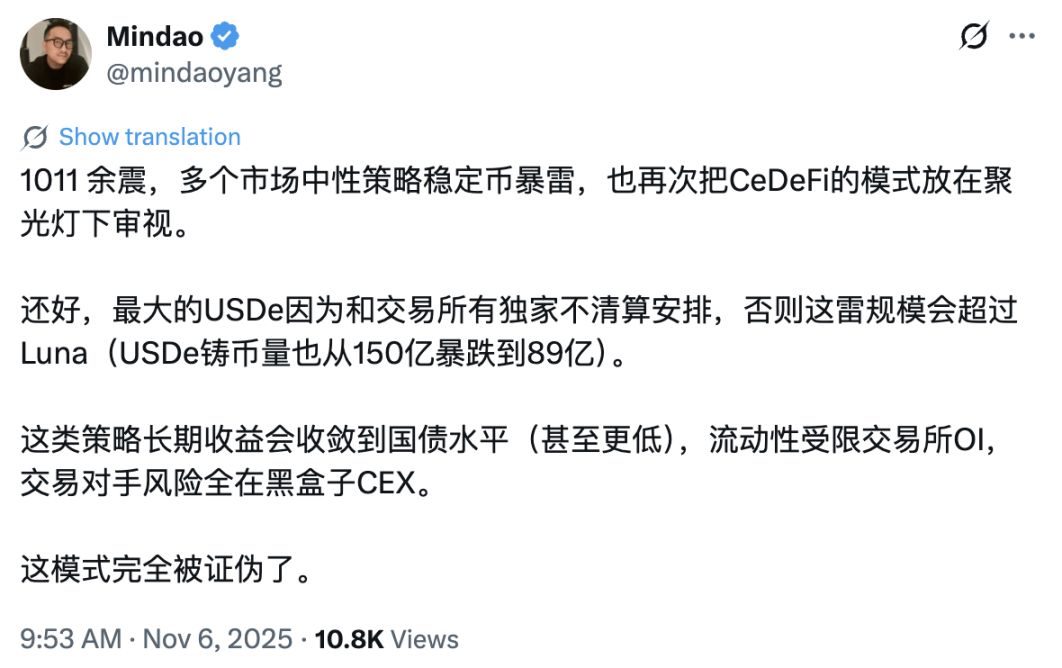
Returning to the issue of USDe-style stablecoins, X user Mindao even bluntly stated that this model may have already been disproven. After more than five years of development, we may once again need to pay a huge price to re-examine how DeFi can do better.
Disclaimer: The content of this article solely reflects the author's opinion and does not represent the platform in any capacity. This article is not intended to serve as a reference for making investment decisions.
You may also like
Bitcoin Price Prediction: Will This Week’s Macro Events Ignite the Next Bull Run to $115,000?

Bitcoin OG Whales Are Taking Profits Dumping $1.1B As BTC Prices Hit $107K
$2000 Stimulus Check Update Today [Live]
Hyperliquid Crypto Price Eyes Breakout, Is the $50 Mark Possible?
